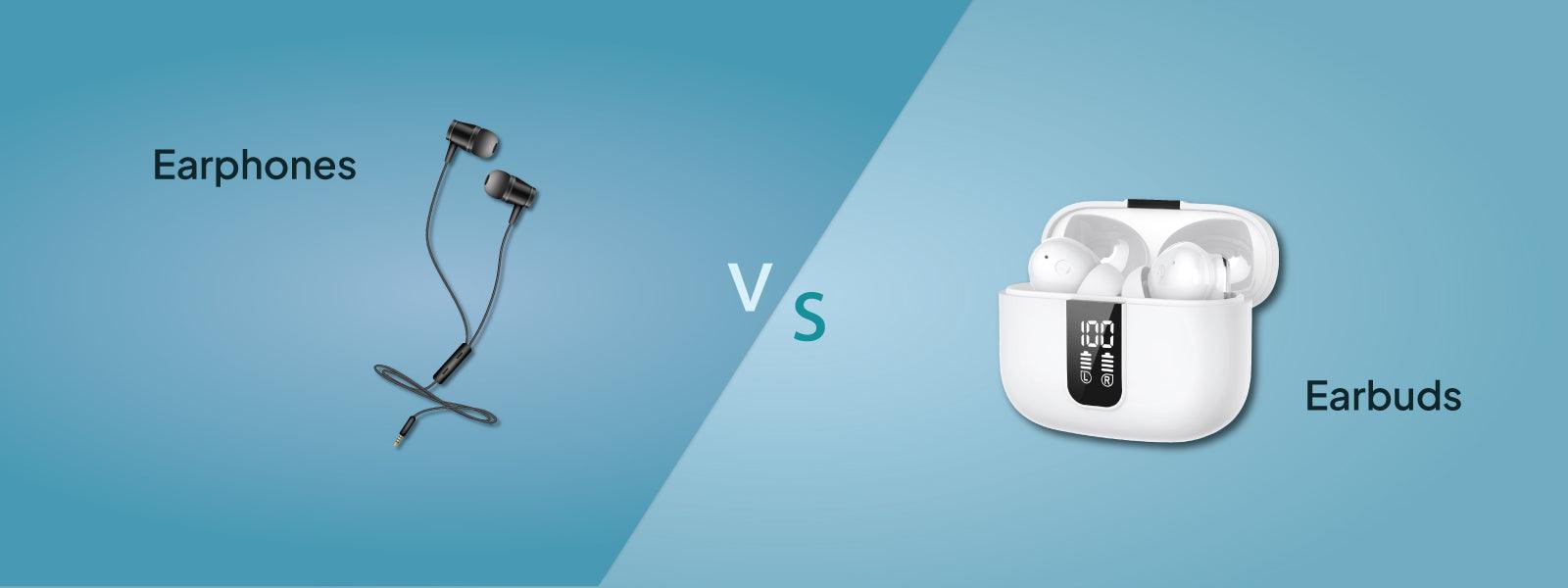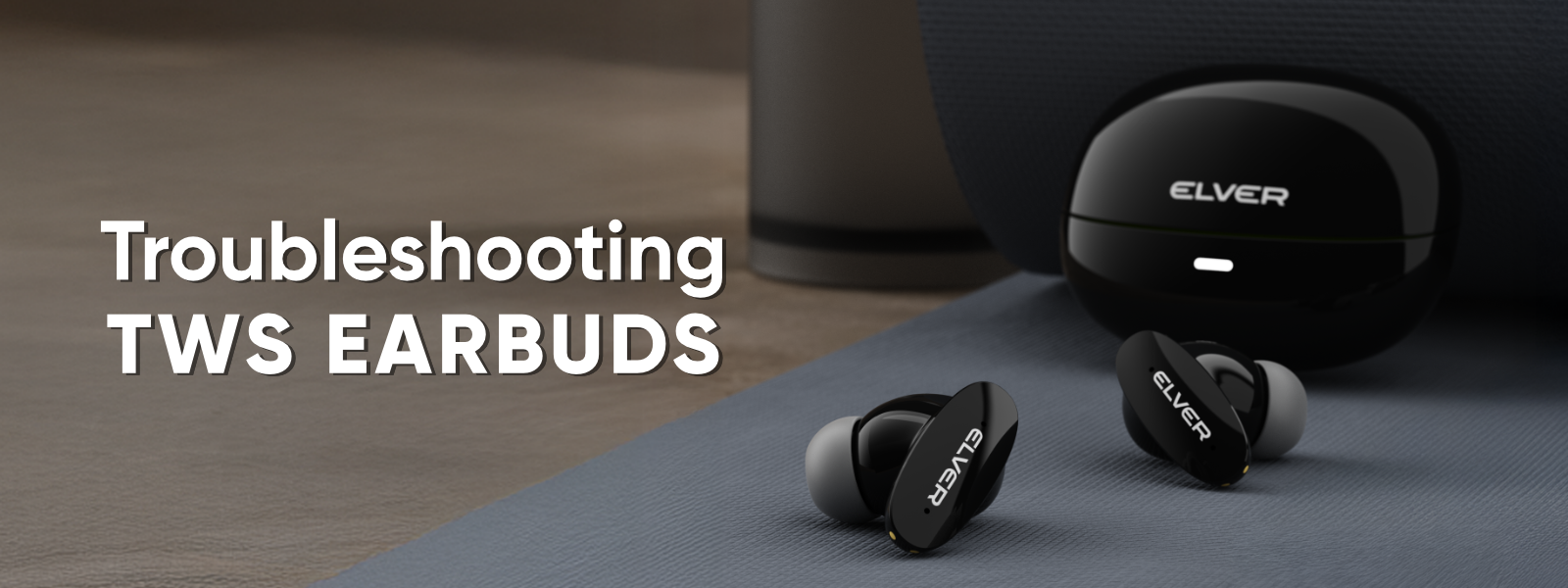About Earphones
Cushions are included with earphones to make them more comfortable to wear in your ears. These cushions are intended to fit precisely inside the ear and might be constructed of memory foam, silicone, or rubber. As they are in-ear, earphones are frequently praised for providing higher sound quality overall, especially in terms of bass response.
About Earbuds
Most earbuds are made of plastic and come in a single size. The way these earbuds fit into your ears will determine how stable and comfy they are. Therefore, they may regularly come loose, particularly when exercising.
Earbuds allow in more background noise because they are positioned outside of your ear canal. This can be advantageous based on your way of living. Earbuds help you be more aware of your surroundings when you walk through the streets on your way to work in the city center. Earbuds aren't the best option, though, if sound quality is your first concern because ambient noise reduces bass.
Earphones vs. Earbuds: A Comparison Table
This comparison table outlines the top features that differentiate Wired Earphones and Wireless Earbuds. From form factor and portability to sound quality and comfort, each category highlights the strengths and considerations of both options. With the help of this extensive table, you can make an informed decision based on your lifestyle and preferred music.
| Feature | Earphones | Earbuds |
| Design | Fit directly into the ear canal. | Rest on the outer ear or sit just outside the ear canal. |
| Size | Typically smaller and more compact. | Slightly larger and may have a more prominent design. |
| Noise Isolation | Generally provide better noise isolation due to ear tips. | Relies on passive noise isolation and earbud fit |
| Comfort | Comfortable for extended wear with a proper fit. | Comfort varies depending on the earbud design and fit. |
| Sound Quality | Can offer good sound quality with proper fit and drivers. | Sound quality can vary, but some models offer excellent audio. |
| Portability | Highly portable and easy to carry. | Compact and portable, but may be slightly larger than earphones. |
| Connectivity | May or may not offer wireless capabilities. | Wireless, often with Bluetooth |
| Durability | Prone to wear and tear, especially cable damage | Durability depends on the build quality and materials used. |
| Price Range | Wide range of prices, from budget to premium | Similar price range to earphones, with premium options available. |
| Popular Uses | Ideal for on-the-go use, workouts, and commuting | Suitable for various activities, including workouts and travel |
These are general comparisons, and individual models may vary in terms of features, sound quality, comfort, and price. It's essential to consider your specific needs and preferences when choosing between earphones and earbuds.
Comparing Earphones and Earbuds:
Comfort: Earphones fit snugly inside the ear canal, providing a secure fit for many users. However, some people may find them uncomfortable for extended periods of wear, especially if they're not accustomed to having something inside their ear canal. Earbuds sit in the outer ear, and while they may be more comfortable for some users, they can also cause discomfort or fall out more easily for others.
Noise Isolation: Earphones typically offer better noise isolation because they create a seal in the ear canal, blocking out external noise. Earbuds, on the other hand, sit in the outer ear and don't form as tight of a seal, allowing more ambient noise to pass through.
Sound Quality: With the same features and specifications, the sound quality of earphones and earbuds can be comparable. Factors such as driver quality, frequency response, and impedance will have a greater impact on sound quality than whether they are earphones or earbuds.
Portability: Both earphones and earbuds are generally lightweight and portable, making them convenient for on-the-go use. However, earbuds may be slightly more compact since they don't have the elongated design that earphones often have.
Stability during Exercise: Earphones tend to stay in place better during physical activities like running or working out since they fit snugly inside the ear canal. Earbuds, while still suitable for exercise for many people, may be more prone to falling out during vigorous movement.
Price: In general, earphones and earbuds with similar features and specifications are often priced similarly. However, there can be variations depending on brand, design, and additional features such as wireless connectivity or noise cancellation.
Durability: Earphones and TWS Earbuds can vary in terms of build quality and durability. Some earphones with mic may have a more robust design with reinforced cables or water-resistant features, making them better suited for outdoor or active use. Similarly, certain earbud models may be designed to withstand sweat or moisture, which is important for those who plan to use them during workouts or in humid environments.
Control and Connectivity: Some earphones and earbuds come with inline controls or touch-sensitive surfaces for managing music playback, adjusting volume, and taking calls. Additionally, consider the connectivity options available—whether they use Bluetooth, have NFC pairing, or support other wireless protocols. Look for models with features that align with your preferences and usage habits.
Aesthetics and Style: While not necessarily a functional consideration, aesthetics and style can be important factors for some users. Earphones and Earbuds come in various designs, colors, and finishes, allowing you to choose a pair that matches your personal style preferences.
Accessories and Extras: Some earphones and earbuds come with additional accessories such as carrying cases, ear tips of different sizes for a customizable fit, or adapters for compatibility with different devices. These extras can enhance the overall value and user experience of the headphones.









